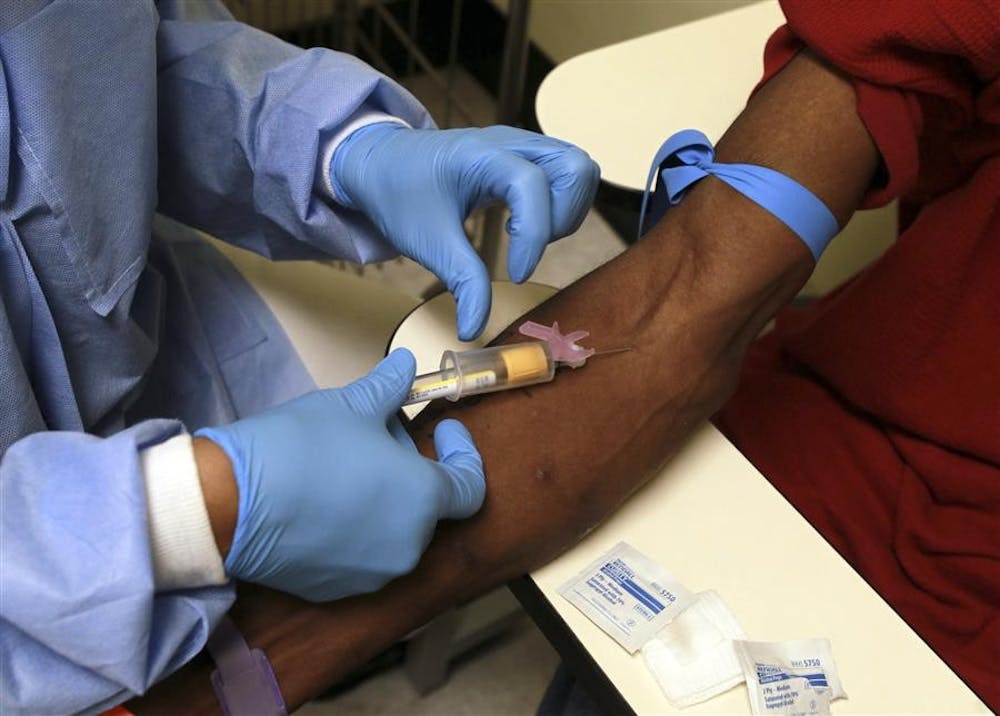When Dr. Danielle Osterholzer learned a girl born in Mississippi was functionally cured of Acquired Immune Deficiency Syndrome, she wasn’t sure she believed the news.
But when Osterholzer, an assistant professor of clinical medicine and pediatrics at IU School of Medicine specializing in the prevention of mother to child HIV transmissions, examined the case, she agreed the results were legitimate.
“There should be celebrating,” she said. “But I wouldn’t have the expectation that everyone’s going to get cured.”
She said there are probably factors in the patient that affected the outcome, such as an immune system that was resistant to the virus. About 1 percent of Caucasians have an HIV-resistant immune system, Osterholzer said. Another contribution to the outcome was the immediacy of the treatment, which could not be easily replicated in most adults infected with HIV.
“But it is exciting, and it does give us some glimmer of hope,” she said.
The case of the Mississippi girl wasn’t a constructed study, she explained.
An HIV infected mother gave birth to a baby girl, without taking HIV medication prenatally. Most HIV transmissions between a mother and child happen at the time of birth, Osterholzer said.
“It appears that they treated the child within 30 hours of birth,” she said. “They put the baby on three dosages of the drugs, at dosages used for treatment, even before they knew the infant was infected. Then they just kept the medications going. They never intended the baby to go off medication.”
What happened next is mostly unknown. The mother eventually stopped bringing the child to the clinic and quit dispensing the medication for at least a year.
“When they tested the child when she returned to care, she didn’t have the virus or the antibodies, so they wondered ‘What is going on?’” she said.
Specialized research laboratory tests revealed that the girl was “functionally cured,” Osterholzer said. Functionally cured means that no replicating HIV DNA was found in her system, despite the fact that they could detect low levels of viral RNA and DNA in the child’s blood.
The result: widespread media attention of the case and discussion from HIV researchers.
“It made a lot of us wonder,” she said. “We don’t normally put the infants on three-drug therapy immediately after birth. It will be interesting to see what we do now. It’s made me think about what I would do in that situation in the future.”
In Indiana, children born to an HIV-positive mother not receiving proper treatment have a 25-percent chance of being infected, according to the State Health Department. If the mother is tested and receives treatment during her pregnancy, the risk falls to 1 percent or less, said Dr. Tom Hrisomalos, an infectious disease physician in Bloomington who works with patients affected by HIV/AIDS.
Hrisomalos said he is not 100-percent confident in the results of the Mississippi case, as it has not been published for peer review. However, if the results are correct, he said it shows how far AIDS medications have come.
“To me that shows that the medicines are incredibly good, and they may cure when given immediately,” he said.
He said the immediate treatment might have killed short-lived cells infected by HIV,
before the virus transferred to long-living cells, like those in bone marrow. People living with HIV have the virus in long-living cells, so the case won’t result in new treatments for those people, he added.
Hrisomalos remembers when he worked at the first HIV clinic in Indianapolis in the ’80s, right before AIDS reached epidemic proportions. Now there are thousands such clinics in the country, he said.
“Early on, we saw people get sick and die. Then, there were the first treatments, but they were toxic,” he said. “Now you start seeing cases like this one, with the baby. Hopefully 10 years from now we will being talking about a cure for those long-lived cells.”
At Postive Link, a program of IU Health Bloomington Hospital Community Health providing care for AIDS clients in south central Indiana, those types of developments have a personal impact.
Emily Brinegar, prevention coordinator for Positive Link, said any new findings about how to treat or prevent HIV are steps in the right direction.
She said cases like these spark hope in clients at Positive Link.
“The majority of our clients do pay attention,” she said. “Things like that lend to a sense of a promising future.”
"Glimmer of hope" in AIDS treatment

Get stories like this in your inbox
Subscribe





